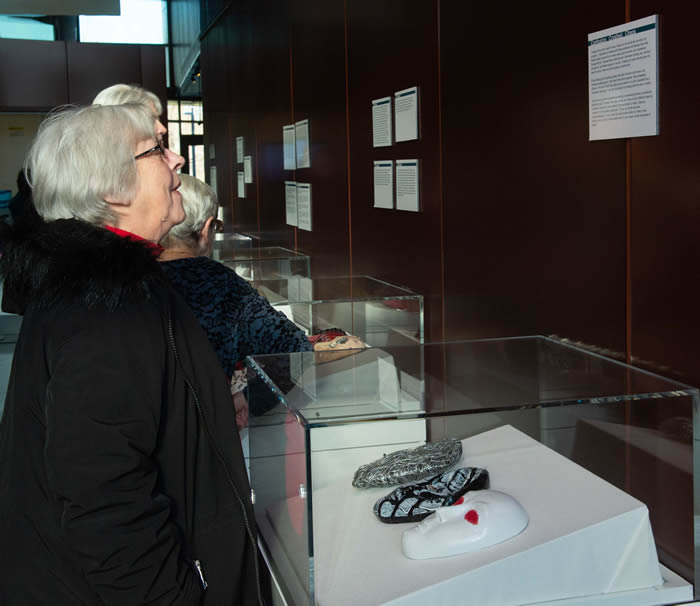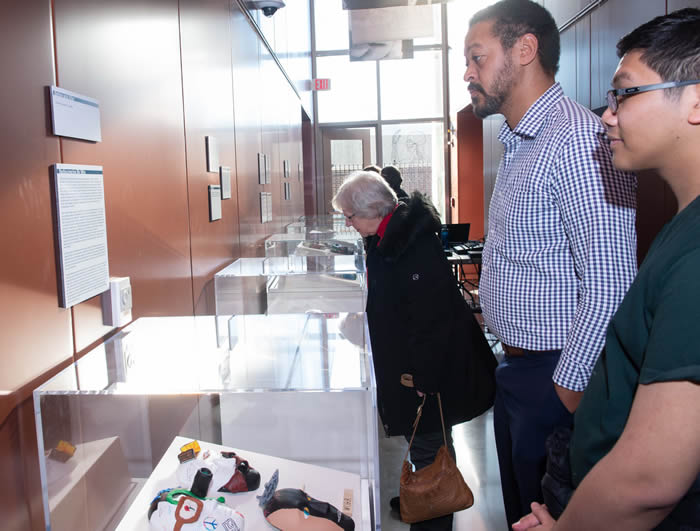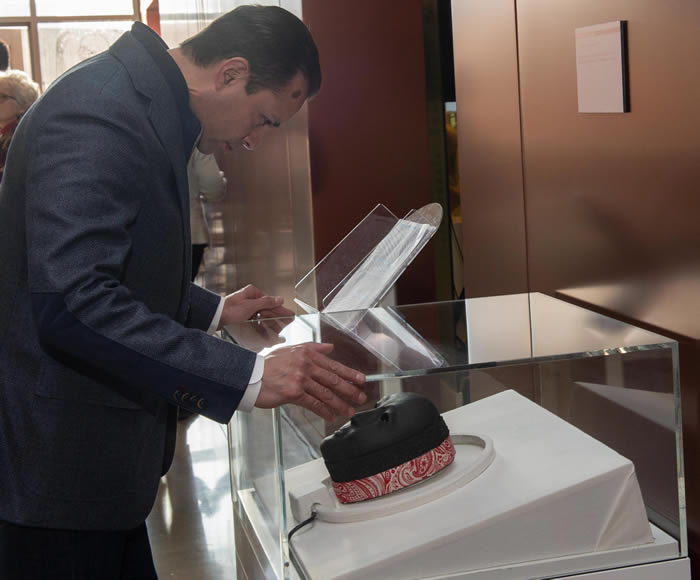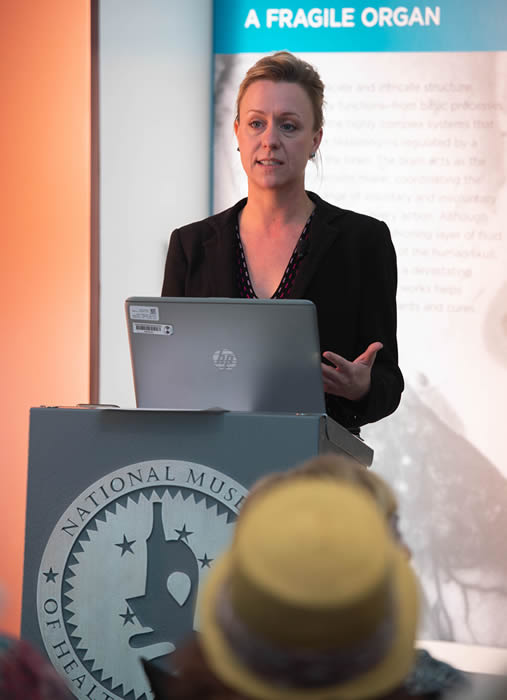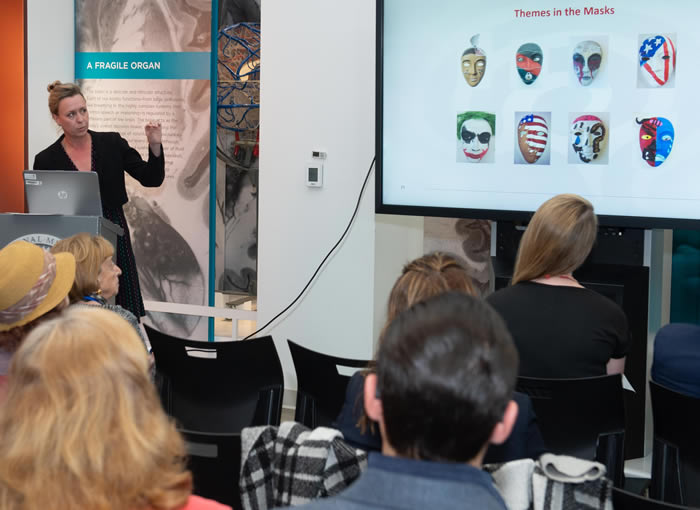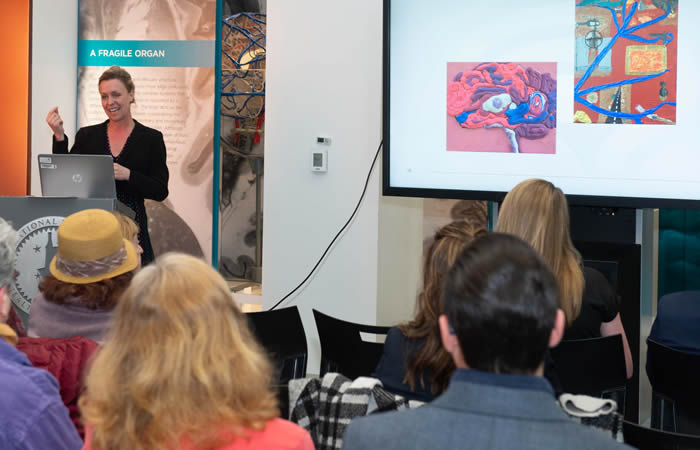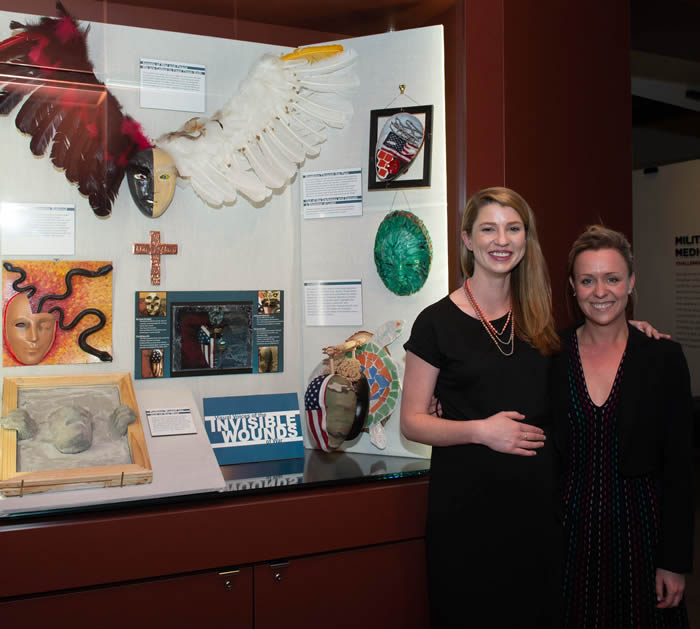Science and the Humanities Converge in TBI and PTSD Art Therapy Research
By Jacqueline Gase
NMHM Public Affairs Coordinator
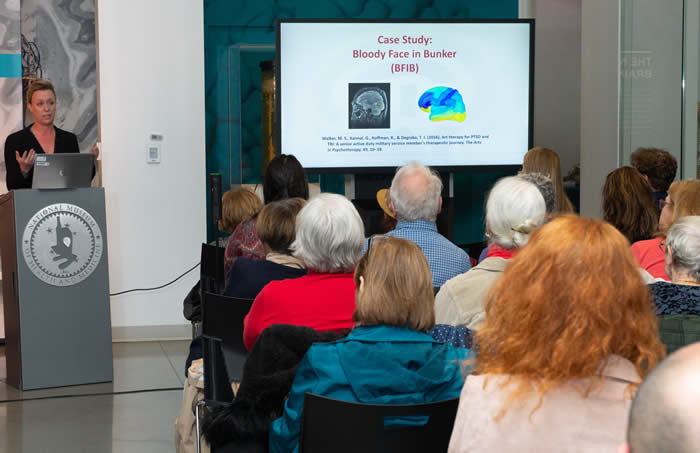
Melissa Walker is the healing arts program coordinator of the National Intrepid Center of Excellence (NICoE) at Walter Reed National Military Medical Center and lead art therapist for Creative Forces: NEA Military Healing Arts Network. During the March 26, 2019 National Museum of Health and Medicine Medical Museum Science Café titled "Visual Voices of the Invisible Wounds of War," Walker described a patient case study wherein art therapy helped a service member overcome his post-traumatic stress at the NICoE to the audience at the museum in Silver Spring, Maryland. (Disclosure: This image has been cropped to emphasize the subject.) (Department of Defense photo by Matthew Breitbart/ Released)
Themes depicted in art therapy correlate to post-traumatic stress, generalized anxiety, and depression scores, as well as electrical patterns in the brain, according to findings presented at the March 26, 2019, National Museum of Health and Medicine Medical Museum Science Café titled "Visual Voices of the Invisible Wounds of War." Melissa Walker, healing arts program coordinator and art therapist at the National Intrepid Center of Excellence (NICoE) at Walter Reed National Military Medical Center presented data from several recent studies.
In a four-week intensive outpatient program at NICoE, service members are immersed in various treatments to address traumatic brain injury and associated psychological health conditions like post-traumatic stress disorder. Under the behavioral health umbrella of the NICoE program, creative arts therapies are used to help service members contemplate and communicate about their experiences, feelings, and identities.
Walker emphasized that, for service members with TBI and PTSD, the inability to verbalize traumatic experiences is linked to Broca's area, the speech-language center of the brain. Displaying a magnetoencephalogram (MEG) pattern image, or the recorded brain activity of a patient with PTSD, Walker explained that the dark blue regions (see photo below) show decreased activity in Broca's area. Patients suffering from a TBI and PTSD cannot verbalize their experiences due to a shutdown in that region of the brain.
"The art therapy bypasses that region and accesses sensory areas of the brain…when they create these visual products they are able to apply words and reintegrate the left and right hemispheres of the brain, which is how a healthy individual's brain operates," said Walker.
Walker and her colleagues wanted to determine how art produces links to certain diagnoses and brain functions. Using 400 masks in the patient database, they coded each mask for a theme. The team highlighted each patient's experience and what the mask meant to each patient. Combining this information with the formal elements of the artwork, they found a micro to macro construct regarding themes of self and identity in the mask: self as an individual, self within relationships, self within community, self within society, and self in and over time.
Applying the themes to patients' incoming PTSD and generalized anxiety scores, the results showed that those patients depicting psychological injury in their masks had higher PTSD scores, and if they depicted a military unit or a strong community, then they had lower PTSD scores. "What we are finding is that this sense of community is a protective factor for PTSD. We must maintain that," said Walker.
"The National Museum of Health and Medicine provides a unique forum to showcase NICoE's research about the benefits of art therapy for service members with traumatic brain injury and associated psychological health conditions. Through programs like the Medical Museum Science Cafe, as well as the associated exhibit titled, "Visual Voices of the Invisible Wounds of War," the museum is able to share the value of military medical research to a broad audience," said Andrea Schierkolk, NMHM public programs manager.
NMHM's public programs provide forums for informal learning that connect the mission of the Department of Defense museum with the public. NMHM was founded as the Army Medical Museum in 1862 and is a division of the Defense Health Agency Research and Development Directorate. For more information about upcoming events, call (301) 319-3303 or visit https://www.medicalmuseum.mil.
